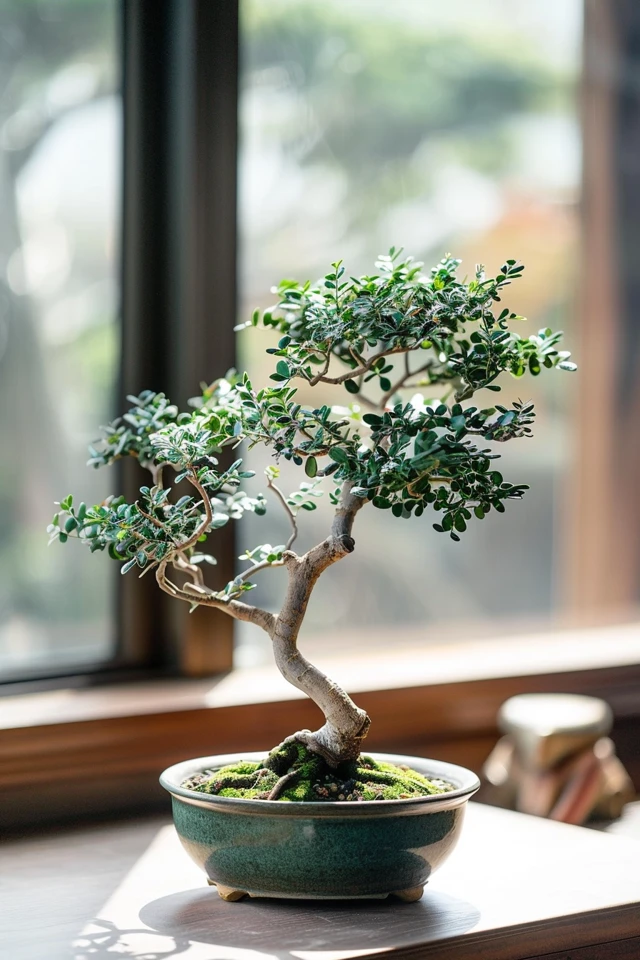To identify a bonsai tree, I need to observe its specific characteristics and foliage. Different species of bonsai trees have distinct leaf shapes, growth patterns, and care requirements. By closely examining the tree and referring to reliable resources, I can determine the species of my bonsai tree. Let’s explore the different types of bonsai trees and their unique features.
Key Takeaways:
- Observing the leaf shapes and growth patterns can help identify bonsai tree species.
- Consulting reliable resources is essential for accurate identification.
- Bonsai trees have unique characteristics that vary across species.
- Understanding the specific care requirements for each species is important for tree maintenance.
- Patience and knowledge are key in identifying and caring for bonsai trees.
Common Deciduous Bonsai Trees
Deciduous bonsai trees are fascinating specimens known for their leaf growth patterns, which can be alternating or opposite. Let me introduce you to some popular deciduous bonsai tree species:
Japanese Maple
The Japanese maple is a beloved choice among bonsai enthusiasts. It boasts distinctive hand-shaped leaves with five pointed lobes. This elegant tree adds a touch of grace and beauty to any bonsai collection.
Trident Maple
The Trident maple is another commonly used deciduous bonsai tree. It is admired for its small leaves and three-lobed shape, which create a delicate and refined appearance. The trident-shaped leaves make it easily recognizable.
Dwarf Pomegranate
If you’re looking for a bonsai tree with vibrant colors, consider the Dwarf pomegranate. This variety showcases beautiful red flowers and round fruit, adding a splash of color and visual interest to your collection.
Hawthorn
Hawthorns are sturdy and resilient deciduous bonsai trees. With their shrubby nature, thorny branches, and small leaves, they bring a sense of rugged charm to your bonsai display. These trees are known for their hardiness and can endure various climate conditions.
Each of these deciduous bonsai trees has its own unique qualities and visual appeal. By exploring different leaf growth patterns and styles, bonsai enthusiasts can create diverse and captivating displays.

Deciduous Bonsai Trees at a Glance:
- Japanese maple: Distinctive hand-shaped leaves with five pointed lobes
- Trident maple: Small leaves with three-lobed shape
- Dwarf pomegranate: Red flowers and round fruit
- Hawthorn: Shrubby tree with thorny branches and small leaves
Popular Bonsai Trees and Their Features
In addition to deciduous bonsai trees, there are many other popular species with unique features.
The Jacaranda is a subtropical tree known for its beautiful blue flowers and compound leaves.
The Flame Tree, also known as the Royal Poinciana, produces large fiery red or golden flowers.
Chinese elm bonsai trees have a fine ramification and small leaves.
European beech and Japanese beech are appreciated for their smooth bark and slimmer leaves.
Wisteria bonsai trees have long tendrils and clusters of flowers in various colors.
Magnolias are known for their large flowers in spring.
Crabapple and Japanese cherry trees are prized for their stunning flowers.
Wisteria bonsai trees have long tendrils and clusters of flowers in various colors.

Conclusion
Identifying the species of your bonsai tree requires careful observation of its foliage and specific characteristics. By understanding the leaf shapes, growth patterns, and unique features of different bonsai tree species, you can accurately identify your tree.
It’s important to consult reliable bonsai tree identification guides and resources to gain more knowledge about the specific care requirements for your bonsai tree species. These resources can provide valuable insights and tips on how to properly care for your bonsai, ensuring its health and longevity.
Remember, identifying and caring for a bonsai tree is a journey that requires patience and ongoing learning. By embracing the art of bonsai and delving into the world of different species, you can create a harmonious bond with your tree, master its needs, and enjoy the beauty it brings to your home or garden.


